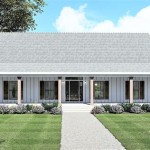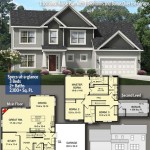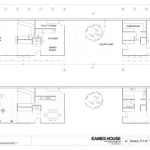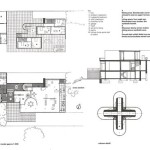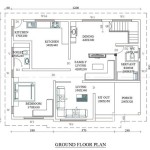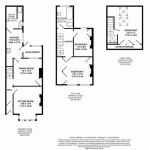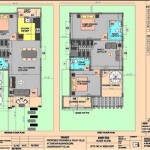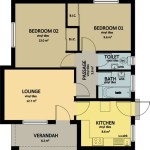Design Your Own House Floor Plans: A Comprehensive Guide
Designing a house floor plan is a complex process, requiring careful consideration of needs, lifestyle, budget, and local building codes. While architects and professional designers offer invaluable expertise, the possibility of designing one's own floor plan can be appealing for several reasons, including cost savings, increased control over the design process, and the satisfaction of creating a truly personalized living space. This article provides a comprehensive guide to designing your own house floor plans, outlining key considerations, tools, and strategies for success.
Before embarking on the design process, a thorough understanding of the fundamental principles of architectural design and space planning is essential. Understanding these concepts will help in creating a functional, aesthetically pleasing, and structurally sound floor plan. This includes grasping concepts like circulation patterns, spatial relationships, and the importance of natural light.
Understanding Your Needs and Lifestyle
The first, and arguably most crucial, step in designing a house floor plan is to conduct a thorough needs assessment. This involves carefully considering the current and future needs of all occupants. This assessment should go beyond simply counting the number of bedrooms and bathrooms. It requires a deep dive into lifestyle preferences, daily routines, and anticipated changes in the future.
Consider the following questions:
- How many people will live in the house now and in the future?
- What are the age ranges of the occupants?
- What are the individual needs and preferences of each occupant (e.g., work-from-home space, hobbies, accessibility requirements)?
- How do you typically entertain guests (e.g., formal dining, casual gatherings)?
- What activities will take place in each room (e.g., cooking, relaxing, working)?
- What storage needs do you have (e.g., seasonal items, sports equipment)?
- What are your preferences regarding privacy and noise levels?
- Are there any specific accessibility requirements (e.g., wheelchair access, wider doorways)?
Answering these questions will help define the necessary square footage, the number and type of rooms required, and the overall layout of the house. For example, a family with young children may prioritize a large, open-concept living area, while a family with teenagers may prefer separate living spaces for increased privacy.
Another vital consideration is the orientation of the house on the building lot. Factors such as sunlight, prevailing winds, and views should be carefully considered when determining the placement of rooms. For instance, bedrooms and living areas should ideally be oriented to capture morning sunlight, while the kitchen and laundry room should be placed on the cooler side of the house. Understanding the site conditions is fundamental to creating a comfortable and energy-efficient house.
Utilizing Design Tools and Resources
Once the needs assessment is complete, the next step is to translate those needs into a tangible floor plan. Several tools and resources are available to assist with this process, ranging from simple paper and pencil to sophisticated computer-aided design (CAD) software.
For beginners, sketching preliminary layouts on paper is a great way to explore different ideas and experiment with spatial arrangements. Graph paper can be particularly helpful for maintaining accurate proportions. However, manual sketching can be time-consuming and challenging to modify. Therefore, digital tools often prove to be more efficient and versatile.
Several user-friendly floor plan design software programs are available for both desktops and mobile devices. These programs typically offer a drag-and-drop interface, pre-designed architectural elements (e.g., walls, doors, windows, furniture), and the ability to visualize the floor plan in 2D and 3D. Some popular options include:
- SketchUp: A free and easy-to-use 3D modeling program that is great for creating basic floor plans and visualizing the overall layout.
- Floorplanner: An online floor plan design tool that offers a wide range of features, including furniture placement, material selection, and 3D rendering.
- SmartDraw: A diagramming and charting software that can also be used to create floor plans. It is particularly useful for creating detailed technical drawings.
- Planner 5D: A mobile app that allows you to create floor plans on your tablet or smartphone. It offers a user-friendly interface and a wide range of features.
For more advanced users, CAD software such as AutoCAD or Revit offers greater precision and control over the design process. However, these programs require a steeper learning curve and are typically more expensive. CAD software is generally preferred by professional architects and designers for creating detailed construction documents.
In addition to design software, numerous online resources can provide inspiration and guidance. Websites like Houzz, Pinterest, and ArchDaily feature vast collections of house floor plans and interior design ideas. These platforms can be invaluable for researching different architectural styles, exploring space planning strategies, and identifying design trends.
Furthermore, consider purchasing books or taking online courses on architectural design and space planning. These resources can provide a deeper understanding of the principles of design and help avoid common mistakes.
Key Design Considerations and Best Practices
Designing a functional and aesthetically pleasing floor plan requires careful consideration of several key design principles. Ignoring these principles can result in a house that is uncomfortable, inefficient, and difficult to live in.
Circulation Patterns: The way people move through the house is a critical factor in its overall functionality. Ideally, circulation paths should be direct, intuitive, and avoid cutting through private spaces. Consider the flow of traffic between different rooms and ensure that there are clear and unobstructed pathways.
Spatial Relationships: The arrangement of rooms in relation to each other is crucial for creating a harmonious and functional living space. Consider the adjacencies between different rooms and how they will be used together. For example, the kitchen should be located near the dining area, and the bedrooms should be grouped together in a quiet area of the house.
Natural Light and Ventilation: Natural light and ventilation are essential for creating a healthy and comfortable living environment. Maximize the use of windows and skylights to bring natural light into the house. Ensure that windows are strategically placed to provide adequate cross-ventilation. Consider the orientation of the house to maximize passive solar heating in the winter and minimize heat gain in the summer.
Scale and Proportion: The size and proportion of rooms should be appropriate for their intended use. Avoid creating rooms that are too small or too large. Pay attention to the height of ceilings and the size of windows and doors to ensure that they are in proportion to the overall room size.
Storage: Adequate storage is essential for maintaining a clutter-free and organized home. Plan for storage in every room of the house, including closets, cabinets, and shelving. Consider the specific storage needs of each room and design accordingly.
Accessibility: Consider the accessibility needs of all occupants, including those with mobility limitations. Ensure that doorways are wide enough for wheelchair access and that bathrooms are equipped with grab bars. Plan for ramps or elevators if necessary.
Compliance with Building Codes: All floor plans must comply with local building codes and regulations. These codes cover a wide range of issues, including fire safety, structural integrity, and accessibility. Consult with a building inspector or architect to ensure that your floor plan meets all applicable requirements. Failure to comply with building codes can result in costly delays and modifications during the construction process.
Energy Efficiency: Incorporate energy-efficient design features into your floor plan to reduce energy consumption and lower utility bills. Consider using energy-efficient windows and doors, insulating walls and ceilings, and installing a high-efficiency heating and cooling system. Orient the house to maximize passive solar heating and cooling. Consider using sustainable building materials and incorporating renewable energy technologies such as solar panels.
Future Proofing: Design your floor plan with the future in mind. Consider how your needs might change over time and design accordingly. This could involve incorporating flexible spaces that can be easily adapted to different uses, such as a home office that can be converted into a bedroom or a playroom that can be transformed into a family room. Also, consider the possibility of adding additions or modifications to the house in the future.
Designing a house floor plan is a challenging but rewarding process. By carefully considering your needs, utilizing the right tools and resources, and adhering to key design principles, you can create a house that is both functional and aesthetically pleasing, a home that truly reflects your unique lifestyle and preferences. Remember to consult with qualified professionals, such as architects, engineers, and building inspectors, to ensure that your floor plan is structurally sound, code-compliant, and meets all applicable legal requirements.

House Plans How To Design Your Home Plan

House Plans How To Design Your Home Plan

Design Your Own Home House Designing Homes

House Plans How To Design Your Home Plan

Creating Your Dream Custom Floor Plan Citadel Signature Homes

Choosing The Best Floor Plan For Your Modular Home Next

Floor Plans Learn How To Design And Plan

From Sketch To Reality How Design A House You Ll Love

Custom Home Designs Design Your Dream Pulte

Customize Your Floor Plan Diyanni Homes

